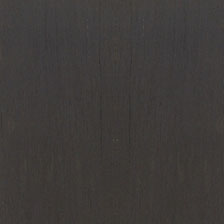African Ebony

Other names
Ébène d'Afrique
Scientific Name
Diospyros mespiliformis, Diospyros crassiflora
Family
Ebenaceae
Description
When freshly cut, the sapwood of African ebony is pink-colored, but darkens to a pale red brown; whereas the heartwood shows a uniform jet-black or black-brown color, sometimes with streaks. Ebony has a very fine texture, with the grain ranging from straight to slightly interlocked, or even moderately curly. The luster of this wood may have an almost metallic appearance. Ebony is an attractive and popular wood with many decorative uses.
Density
(H=12%) : 0.90
Treatability
Not permeable
Seasoning
It air dries slowly, with some risk of distortion and checking.
Stability
Poorly stable
Durability
The heartwood is durable, being resistant to termite attack, but sometimes susceptible to boring beetles.
Workability
The wood is moderately difficult to saw and work, particularly with hand tools. It may cause serious blunting of saw teeth and cutting edges. The wood surfaces take an excellent polish, but picking up of interlocked grain may occur in planning; a reduced cutting angle of 20° is recommended. The wood Glues, turns, and finishes well without the use of a filler. It has a tendency to split upon nailing, and pre-boring is advised.
End-Uses
- Fiber or particle boards
- Turned goods
- Wind instruments
- Musical instruments
- Cabinetwork (high class furniture)
- Sculpture
- Tool handles (resilient woods)
Notes : A preliminary surface treatment with alcohol is recommended for polyester coatings and undercoats.
Download the complete data sheet